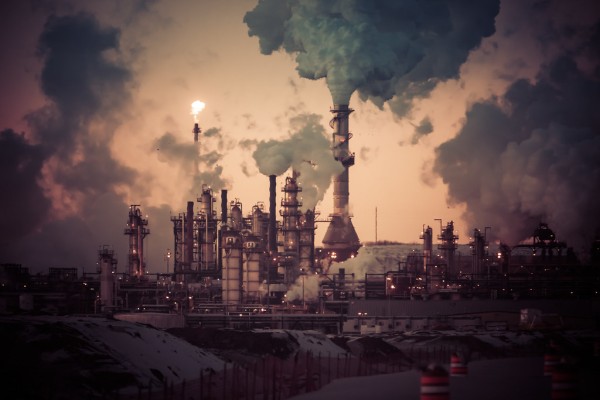Polymer perversity
Despite this pestilence of plastic, the petrochemical industry is gearing up for a surge in production

I am reminded by everything from my computer keyboard to the more recent fillings in my teeth that there are few substances more ubiquitous than plastic. It litters the land, while the oceans are choking on some 51 trillion pieces of it. By 2050, we can expect there to be more plastic (by weight) in the sea than fish, which may compromise the oceans’ capacity to absorb carbon dioxide. Abundantly present in the habitat of wildlife and especially marine life, plastic kills tens of millions of whales, dolphins, seals, seabirds, turtles, fish and other sea creatures every year by “entanglement, strangulation, suffocation or starvation,” as one account grimly enumerates. And once ingested by ocean dwellers, it enters the food chain, with as yet unknown consequences for human health. Microplastics have even contaminated tap water throughout the world.
Despite this pestilence of plastic, the petrochemical industry is gearing up for a surge in production that will offer a shot in the arm to the fossil fuel industry and deliver a shot in the foot to efforts to limit CO2 emissions.
About six percent of the world’s oil is currently used to produce plastic. But plastic production is set to quadruple by 2050, at which point it will account for 20 percent of oil consumption and 15 percent of the global annual carbon budget that must be respected if there is any hope of preventing global temperatures from rising by more than two degrees Celsius above pre-industrial levels (all this according to a 2016 report, The New Plastics Economy commissioned by the World Economic Forum). Québec science journalist Philippe Gauthier has pointed out that whatever progress might be made in reducing fossil fuel consumption through the use of electric cars will be nullified by the spike in plastic production, leaving the scale of the oil and gas industry’s extractive operations intact.
Plastic is the fossil fuel industry’s answer to the spectre of declining demand. This is why, as Matthew Taylor of The Guardian (December 26, 2017) reported, based on information from the American Chemistry Council, corporations like Exxon and Shell have invested over $180 billion in hundreds of facilities dedicated to its proliferation. They are banking on the use of cheap fracked shale gas as a feedstock to boost profits.
The Center for International Environmental Law (CIEL) published a series of reports in September 2017 under the title Fueling Plastics. One of the reports details the integration of the U.S.-based fossil fuel and plastics industry, noting that “… major oil and gas producers own plastics companies, and major plastics producers own oil and gas companies. DowDuPont, ExxonMobil, Shell, Chevron, and BP are all integrated companies.”
Oddly, one of the few mass market publications to have connected the dots between plastic pollution, fossil fuel production and climate change is Teen Vogue. In the magazine’s remarkable (especially given the source) 2018 series “Plastic Planet,” contributors discuss everything from the use of plastics in the beauty and fashion industries to the colonialist underpinnings of the plastics crisis and the limits of recycling (antithesis-of-fun fact: of the 8.3 billion metric tonnes of plastic estimated by scientists to have been produced between the 1950s and 2015, 6.3 billion tonnes had already became nonbiodegradable waste by the end of that 65-odd year period and only nine percent had been recycled).
The series featured an article by writer and activist Maia Wikler titled “The Fossil Fuel Industry is Worsening the Plastics Crisis.” After elucidating the links between petrochemical companies, plastic and the future of the fossil fuel industry, Wikler concludes, soundly, that “When water protectors and activists resist pipelines across North America, organize for divestment from fossil fuels, campaign for renewable energy and urgent climate action, they are also actively addressing the plastics crisis at the root.”
It makes sense to tackle the crisis at the branch, too, by supporting growing campaigns to hold industry accountable for the spiralling scourge of plastic waste, such as the international Break Free From Plastic movement. The plastics lobby resists regulation, attempting to shift responsibility onto the consumer and presenting recycling as the answer to pollution. Any real solution, however, begins by compelling the industry to clean up its messes and sharply curbing plastic production through such measures as strict limits on microplastics and bans on single-use plastic products.
A CD editor for the last 15 years and now a coodinating editor, Andrea Levy is a Montréal-based historian, translator, journalist and activist.
This article appeared in the Winter 2019 issue of Canadian Dimension (Injustice at Unist’ot’en).










